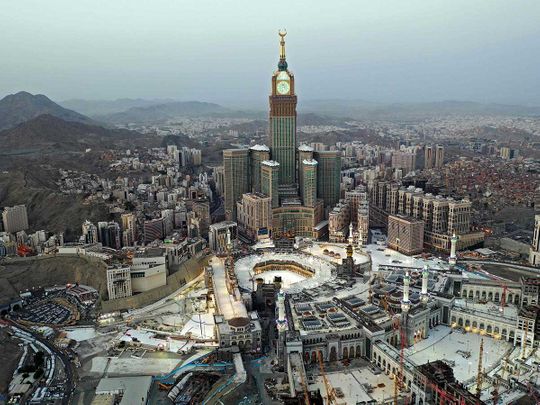
Cairo: Around 3 million worshippers have got access to the Grand Mosque in the holy city of Mecca over the first 20 days of the Muslim holy month of Ramadan that began on April 13, a Saudi official has said.
The figure includes nearly 1 million Umrah pilgrims and 2 million other worshippers allowed into the holy site to perform prayers amid stringent precautions against COVID-19.
“All resources have been utilised to ensure comfort of all worshippers,” Eng. Osama Al Hejeili, the head of the Grouping Directorate, said.
“Precautionary measures including physical distancing have been implemented to protect safety of visitors of the Grand Mosque amid integration of services provided to meet needs of the worshippers,” he added.
He explained that tracks have been designated for the elderly and people with special needs to undertake their rituals comfortably.
The Umrah pilgrims were urged to observe the timings given to them via smartphone apps Eatamarna and Tawakkalna to get access to the mosque and abide by health precautions including the wearing of face masks and distancing to limit the spread of COVID-19.
“The Presidency for Affairs of the Grand Mosque has devoted its full operational capacity to serving the Umrah pilgrims during the holy month of Ramadan as the circumambulation courtyard housing the Kaaba has been completely designated for pilgrims,” Al Hejeili added.
Ramadan is usually a peak season for the Umrah or minor pilgrimage.
Saudi authorities have increased the capacity of the Grand Mosque to reach 50,000 Umrah pilgrims and 100,000 worshippers per day in Ramadan.
In October, Saudi Arabia embarked on a plan for gradual resumption of the Umrah after suspension of around seven months amid strict precautions against COVID-19. The first phase of the plan, which began on October 4, allowed 6,000 Umrah pilgrims from inside the kingdom per day into the mosque.
The second went into effect on October 18, allowing about 40,000 worshippers and 10,000 pilgrims a day into the site. As many as 20,000 Umrah pilgrims and 60,000 worshipers per day were allowed into the mosque according to the third phase that started in November.
Last month, Saudi authorities announced that only “immunised” people against COVID-19 will be allowed to perform the Umrah and visit the Prophet’s Mosque starting from Ramadan 1. The Ministry of Hajj and Umrah has defined the eligible “immunised” worshippers as those who have received two doses of vaccination against COVID-19; those receiving a single dose of inoculation at least 14 days in advance; and those who have recovered from the virus infection.
The number of tracks designated for encircling the Kaaba has also increased by 11 tracks to reach 25 to ensure safe distancing among pilgrims and help them perform the ritual comfortably.








